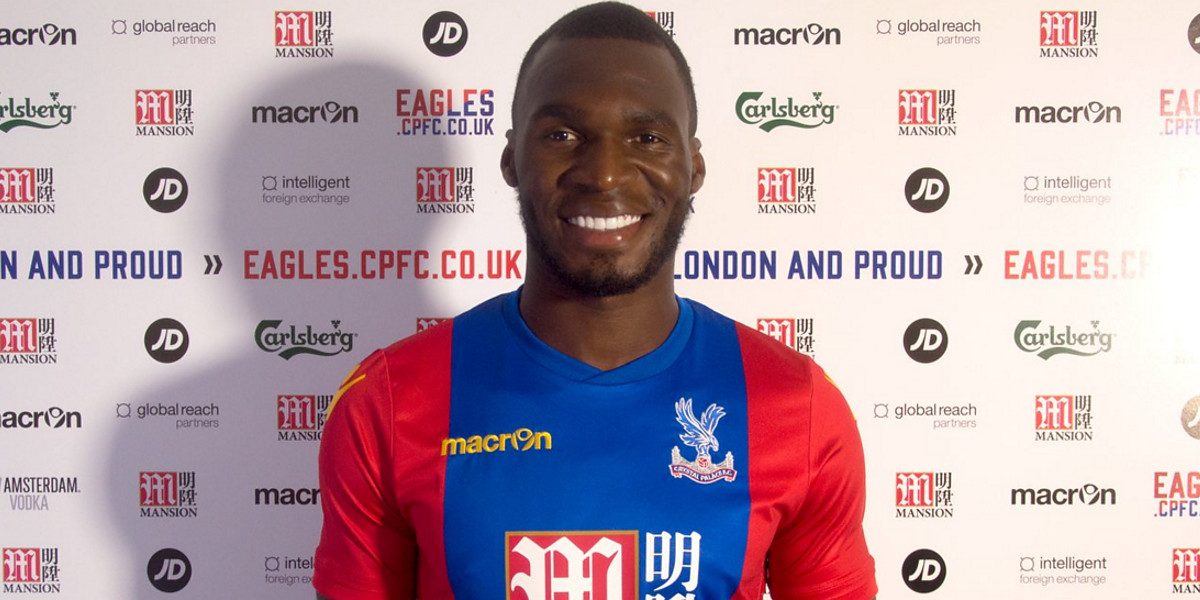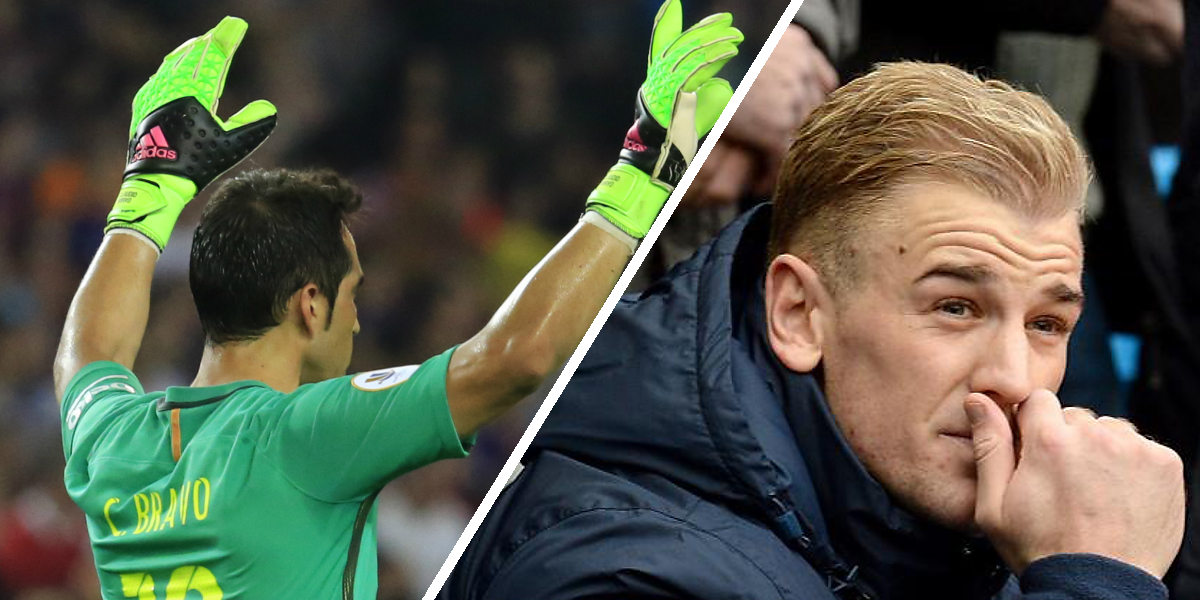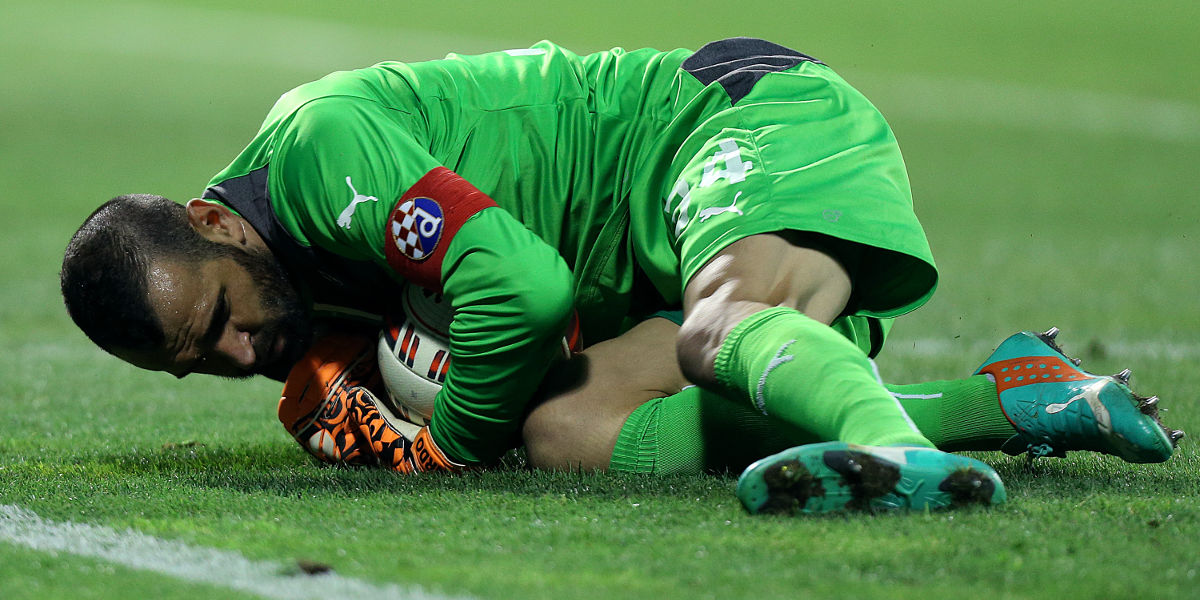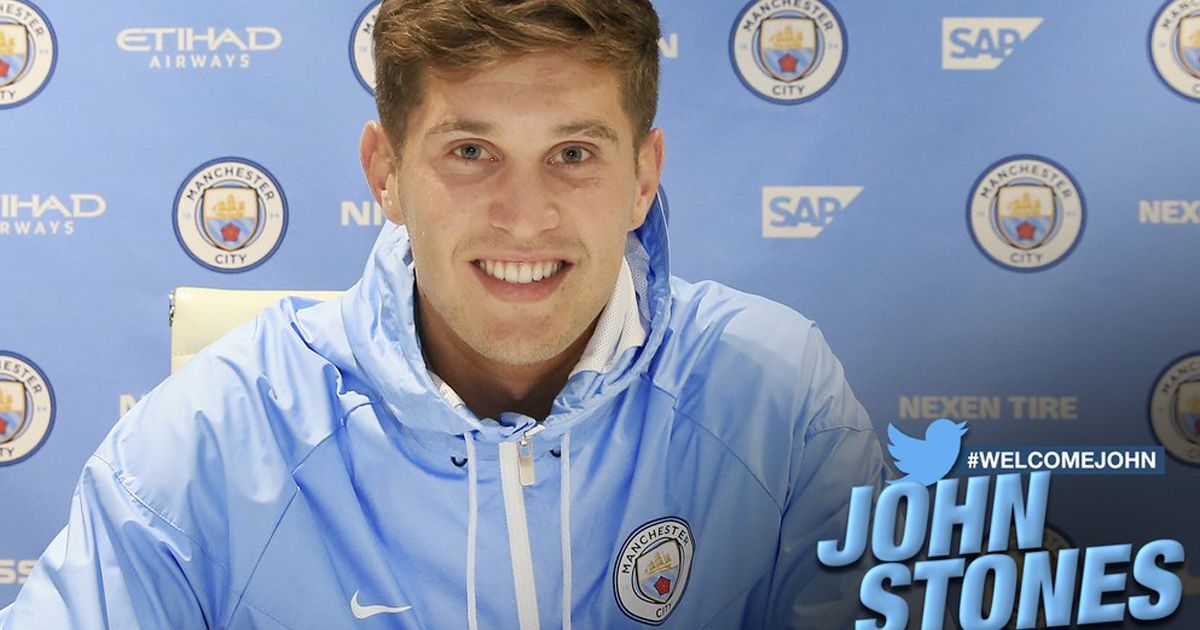by Matt Lawton
The first professional footballers to pass through the gates of Auschwitz never left. Like Roy Hodgson, Arpad Weisz had managed Inter Milan.
He had guided the club to the first unified Italian title in 1930. He discovered Giuseppe Meazza, after whom the San Siro stadium that is the modern home to both Milan clubs is also named. Weisz had played for Internazionale too.
But Weisz was a Hungarian Jew as well as a former Hungary international and he was murdered at Auschwitz, as were his wife, Elena, and his children, Clara and Roberto.
Walking between the bleak, brown brick buildings at Auschwitz on Friday, I took the opportunity to tell Hodgson about his predecessor.
‘I didn’t know that,’ said England’s manager. ‘Shocking. Really shocking.’
Hodgson and members of his squad passed under that same infamous sign that had once greeted Weisz at the entrance to Auschwitz.
That had lied to him as it lied to all the men, women and children who were gassed, mutilated, shot or simply allowed to die of starvation or disease in this purpose built death camp.
Arbeit Macht Frei means ‘work sets you free’ and, as England’s guide, Wojciech Smolen, said: ‘It was pure irony.’
Seven players joined Hodgson on the 70km journey from their tournament base in Krakow. Wayne Rooney and Andy Carroll, Theo Walcott and Phil Jagielka, Joe Hart, Jack Butland and Leighton Baines.
With them was FA chairman David Bernstein and other officials. The players went in casual wear after consultation with the sports science and medical team, who wanted them in comfortable outfits ahead of Monday’s opening game.
But the designer logos were removed and, instead of the white polo shirts, these were black and selected for the occasion.
Hodgson and Bernstein were among those wearing blazer and tie. Another group, including Steven Gerrard and John Terry, attended the Schindler museum.
They had already heard the story of Zigi Shipper, a survivor of Auschwitz. He had shared his memory of when he arrived here as a young prisoner, a terrified 10-year-old.
‘The sky was hazy and there was a terrible smell,’ he told them at their hotel in Hertfordshire last week. ‘From a distance we saw chimneys with smoke coming out. We didn’t realise what it was but rumours started spreading that it was a crematorium.
‘I was taken to Auschwitz. We were one of the few transports arriving on a ”Named” list. The other people on the train weren’t named and they went to “Selection”.
‘Sometimes the guards asked women to put their children down. Mothers wouldn’t. So the guards tried to rip the children out of their arms. If they didn’t succeed, they shot the woman or the child or both. I ask myself the same question every day. How can a human being do that?’
Rooney asked the exact same question after standing on the spot where the selection process took place, having already seen the photograph of an SS doctor – believed to be Heinz Thilo – deciding whether a person was sent to work or ordered to the gas chambers.
As Wojciech had explained, most of those who perished were murdered within two hours of arriving here. Rooney was the first England player to raise his hand when offered the opportunity to come here. He had watched The World At War series.
‘I wanted to see this place for myself,’ he said. ‘It’s hard to understand. You’ve seen the amount of children’s clothes, all their shoes, it’s a really sad experience.
‘There was the guy, the doctor, who made all the decisions, whether they live or die. He’s probably gone home after that, listened to music, had dinner with his family as if nothing had happened.
‘It’s crazy. It’s only when you see it first hand; you see how these people were made to work without food and water. It was a form of torture. Many died. The others got murdered.
‘It’s good for us to see what happened. It certainly puts football into perspective. What happened here will never be forgotten.’
Wearing skull caps, Hodgson and Bernstein lit candles of remembrance that were then placed on the train tracks that still mark ‘the road to death’.
Bernstein, now 69, is from a family of Hungarian Jews who moved to New York; a family who might have been brought here had his grandfather chosen to stay in Budapest.
‘You do wonder what would have happened,’ he said. Bernstein shook his head in disgust when he heard how the prisoners were told to memorise the number of the hook where they hung their clothes before entering the ‘showers’, so they could find them again afterwards.
Faced with a room full of everyday household items that prisoners brought, in the belief that they would be living at the camp, Hart had to step away at one moment and take a few breaths.
Carroll pointed out a hole in the ceiling to Walcott where the Zyklon B had been dropped into the gas chambers; a chemical that could kill within a minute; five minutes for those standing further away.
The Nazis would give it 20 before opening the doors. The sight of all those suitcases, one belonging to a two-year-old boy called Petr Eisler, was too much for Jagielka; a player with Polish roots.
He too had to step away for a moment to gather himself. The horror. The players were a credit to the Football Association in the way they conducted themselves.
On entering the building that housed the gas chamber and ovens, Jagielka read aloud the notice.
‘You are in a building where the SS murdered thousands of people.’
Accompanying them was Avram Grant, the former Chelsea, West Ham and Portsmouth manager, who told them that 15 members of his family had died at Auschwitz. Bernstein and Hodgson signed the book of condolence.
Grant then gave a brief but moving speech.
‘It is very important that you came here,’ he said. ‘People will see you have come here and then others will come here, too.’
They can pay their respects to Julius Hirsch, who was the first Jew to represent the German national team. He also fought for the German army in the First World War, serving his country with such distinction he was awarded the Iron Cross.
His family produced Hirsch leather footballs, at the time a global brand much like England’s sponsors Umbro are today. In 1939, Hirsch divorced his non-Jewish wife to protect her from the Nazi terror, and on March 1, 1943 he was deported, alone, to Auschwitz.
He sent a postcard two days later to his children, Heinold and Esther. It was the last they ever heard from their father. His official death was given as May 8, 1945 – the end of the war – but it is thought he was one of more than a million victims of the Nazi killing machine in Birkenau a few days later.
The Nazis eventually seized his children too, sending the ‘first half breeds’ to a concentration camp in early 1945. Mercifully, Heinold and Esther stayed alive long enough to walk free a few months later.
‘That just sums it up,’ said Hodgson. ‘You play for Germany, fight for Germany, then you end up here.’
Eddy Hamel ended up here too. Born in New York in 1902, Hamel had travelled to Europe to play football. A talented right winger, he became the first Jew to play for Ajax and after he retired he remained in Holland.
He managed Alcmaria Victrix and continued to play for an Ajax veterans team. But he was murdered at Auschwitz on April 30, 1943. ‘Everyone should come to this place,’ said Hodgson.
They should, because people died here. Footballers included.























